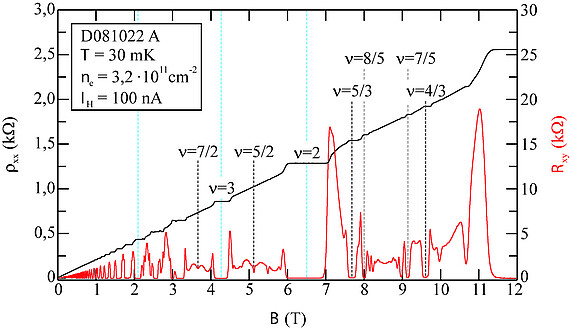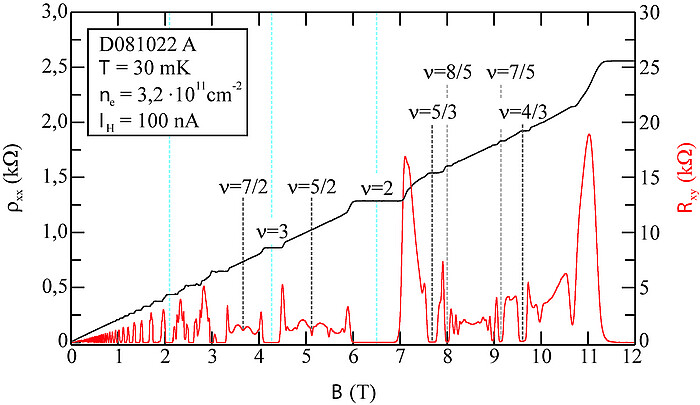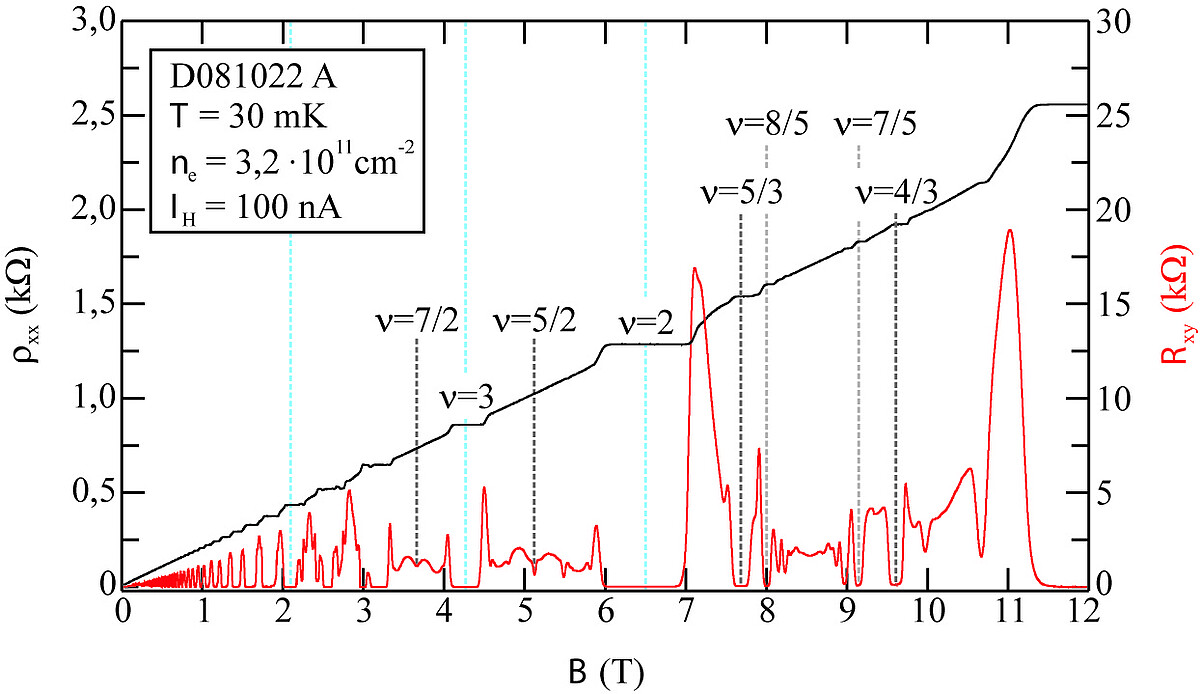In 1980, Klaus von Klitzing examined the Hall effect in metal-oxide-silicon field-effect transistor containing a two-dimensional electron system (2DES) at low temperatures and high magnetic fields. During his measurements he observed plateaus in the Hall voltages which were not expected in the classical Hall effect. These plateaus had quantized values and were accompanied by minima in the longitudinal resistance. Klaus von Klitzing showed that the Hall plateaus only depends on fundamental physical constants, h and e, as well as on integer values also called filling factor.
The Quantum Hall effect is one of the fundamental phenomena occurring in two-dimensional electron systems. After more than 40 years the Quantum Hall effect is still subject of research due to continuous increase of the sample quality. Especially, the theory of the fractional quantum Hall effect is challenging so that not every experiment is understood until now.


 ©
AG Haug
©
AG Haug
Negative Differential Magnetoresistance
The increased sample quality is important for the observation of new quantum effects in low-dimensional systems. Until now, the sample quality is determined by the electron mobility at B=0T. However, not every 2DES with a high electron mobility show each known quantum effect. Looking for a new method to determine the quality of a 2DES we examine a negative differential magnetoresistance around zero magnetic field. This magnetoresistance as well as the sensitive filling factor 5/2 show similar behavior for several parameters so that we conclude that both effects depend on a unconsidered disorder potential.
Contact


30167 Hannover


